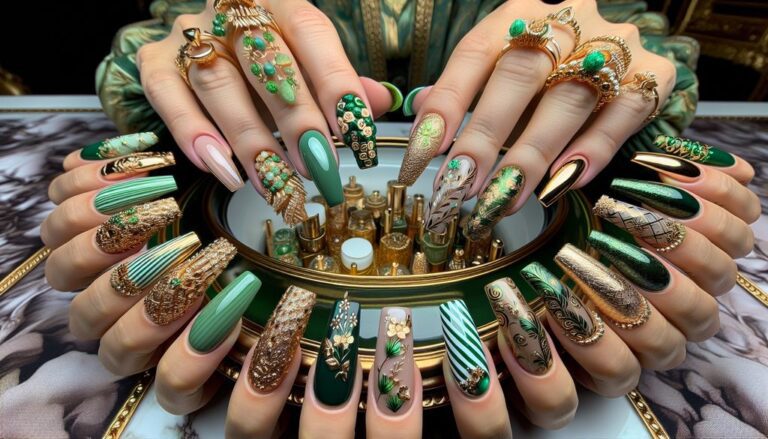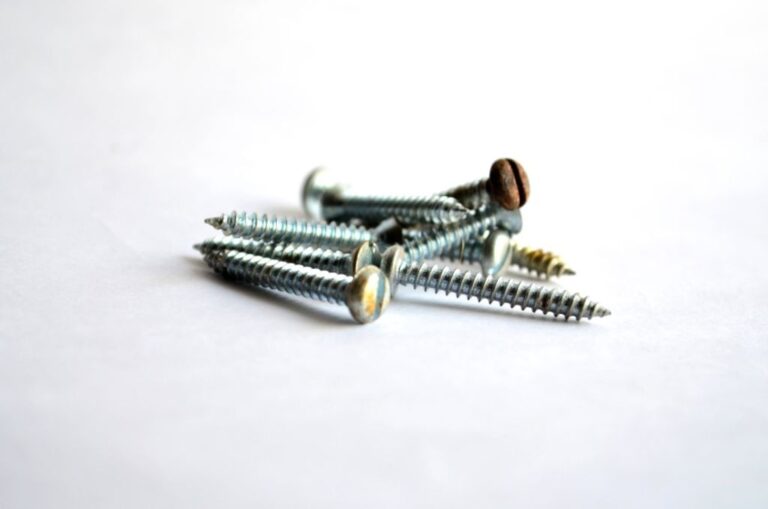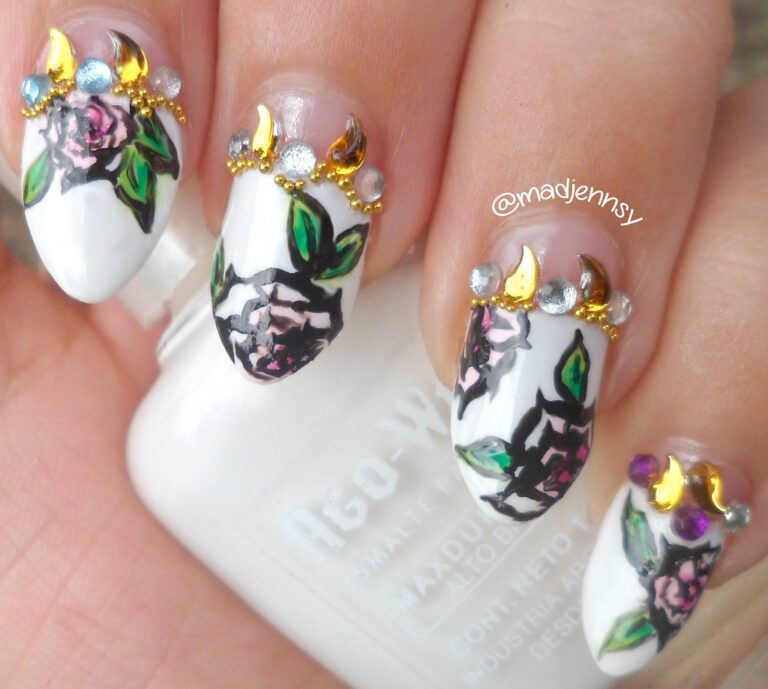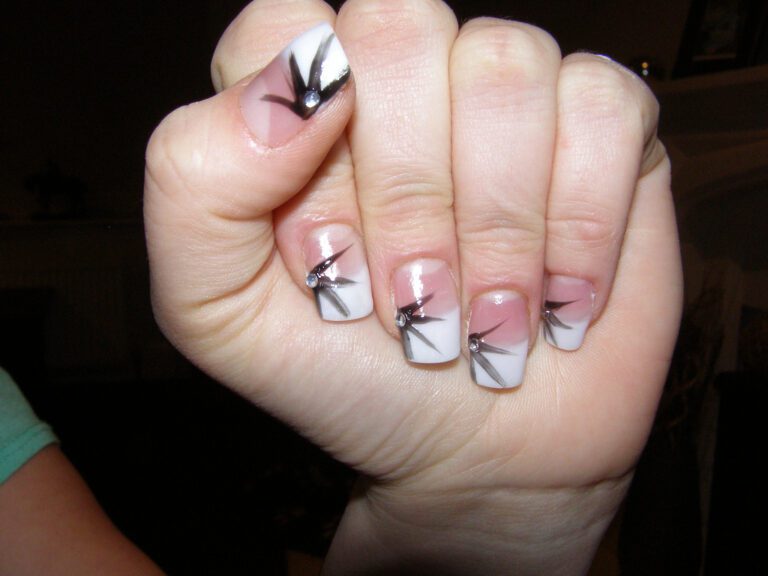“Fast and Furious: Nails That Grow the Fastest”
Nail growth is a fascinating process influenced by various biological, nutritional, lifestyle, and medical factors. Understanding the dynamics of nail growth is essential for maintaining healthy and strong nails. In this article, we will explore the science behind nail growth, debunk common myths, and provide practical tips for promoting faster and healthier nail growth.
Key Takeaways
- Proper hydration is essential for promoting faster nail growth.
- Vitamins and minerals, such as biotin and iron, play a crucial role in supporting healthy nail growth.
- Regular exercise can improve blood circulation, which contributes to faster nail growth.
- Nail growth rates differ between fingernails and toenails, with fingernails generally growing faster.
- Identifying and addressing underlying medical conditions is important for maintaining optimal nail growth and health.
The Biology of Nail Growth

Understanding the Nail Growth Cycle
The process of nail growth is both fascinating and complex. Nails grow from a matrix at the base of the nail root, where matrix cells multiply and synthesize keratin, the hard protein that makes up the nail. This growth cycle is continuous, ensuring that nails can recover from damage and wear over time.
-
Nail growth begins deep under the cuticle, in an area known as the nail matrix. The cells in the matrix produce new nail cells, which push the older cells forward; these older cells harden and form the visible nail.
-
The rate of nail growth is influenced by various factors, including age, nutrition, and health. Generally, fingernails grow faster than toenails, averaging about 3.5 millimeters per month compared to 1.5 millimeters for toenails.
Tip: To support healthy nail growth, ensure a balanced diet rich in vitamins and minerals, and consider regular moisturizing to maintain the nail bed and cuticle health.
Factors Influencing Nail Growth Rates
Nail growth rates can be influenced by a variety of factors, including diet, hormonal changes, and age. These factors can impact the speed and strength of nail growth, leading to variations in growth rates among individuals. Understanding these influences is crucial for maintaining optimal nail health and promoting faster growth.
To illustrate the impact of these factors, consider the following table:
| Factor | Influence |
|---|---|
| Diet | Nutrient intake, hydration |
| Hormonal Changes | Hormonal balance, menstrual cycle |
| Age | Natural aging processes |
It’s important to note that these factors are interconnected and can collectively contribute to the overall nail growth rate. Paying attention to these influences and making appropriate adjustments can lead to healthier and faster-growing nails.
For those seeking to enhance nail growth, it’s essential to maintain a balanced diet, manage hormonal changes, and adapt nail care routines to accommodate age-related changes.
Comparing Fingernails and Toenails
Fingernails and toenails differ not only in size and shape, but also in their growth rates. Fingernails generally grow faster than toenails, with an average growth rate of approximately 3 millimeters per month for fingernails and 1 millimeter per month for toenails. This difference in growth rate is influenced by factors such as blood flow, usage, and environmental conditions. Here’s a comparison of the growth rates:
| Nail Type | Average Growth Rate (mm/month) |
|---|---|
| Fingernails | 3 |
| Toenails | 1 |
It’s important to note that individual variations in growth rates exist, and these averages may not apply to everyone. Proper nail care and maintenance are essential for promoting healthy growth and preventing common nail issues such as brittleness and breakage. Regular trimming and moisturizing can help maintain the optimal length and condition of both fingernails and toenails.
Nutritional Foundations for Healthy Nails

Key Vitamins and Minerals for Nail Growth
Adequate nutrition is essential for maintaining healthy nails, and certain vitamins and minerals play a pivotal role in the growth and strength of your nails. Among these, biotin, also known as vitamin B7, is often touted for its ability to support nail health. Deficiencies in biotin can lead to brittle nails, making supplementation beneficial for those not receiving enough through their diet.
Iron is another crucial nutrient, as it helps in the formation of hemoglobin which carries oxygen to the cells, including those responsible for nail growth. Insufficient iron can lead to anemia and result in pale, weak nails. Similarly, zinc is involved in protein synthesis and cell division, which are fundamental processes in nail growth.
Here is a list of key nutrients and their role in nail health:
- Biotin (Vitamin B7): Prevents brittleness and improves thickness.
- Iron: Essential for oxygen transport to nail cells.
- Zinc: Supports protein synthesis and healthy cell division.
- Vitamin C: Important for collagen production.
- Vitamin A: Necessary for cell growth.
- Vitamin E: Helps protect cells from oxidative damage.
Tip: While a balanced diet typically provides these nutrients, individuals with dietary restrictions or certain health conditions may benefit from supplements. However, it’s important to consult with a healthcare provider before starting any supplementation.
Foods That Promote Faster Nail Growth
The quest for stronger, faster-growing nails often leads to the exploration of dietary choices. A balanced diet rich in certain nutrients can be a game-changer for nail health. Protein is the building block of nails, so incorporating lean meats, fish, and legumes into your meals can provide the necessary amino acids for nail fortification.
Antioxidants also play a crucial role in protecting nail cells from damage. Foods high in antioxidants, such as berries, nuts, and green vegetables, should be a staple in your nail-friendly diet. Essential fatty acids, found in oily fish and flaxseeds, contribute to the natural oils that keep nails hydrated and less prone to breakage.
Tip: Consistently including biotin-rich foods like eggs, almonds, and whole grains can help improve nail strength and curb brittleness.
While no single food will magically speed up nail growth, a combination of the following can support overall nail health:
- Protein sources: chicken, turkey, tofu
- Omega-3 rich foods: salmon, walnuts, chia seeds
- Iron-rich options: spinach, lentils, beef
- Vitamin C carriers: oranges, strawberries, bell peppers
Remember, hydration is also key; drinking plenty of water throughout the day aids in maintaining nail flexibility and preventing splits.
The Impact of Hydration on Nail Health
Hydration plays a pivotal role in maintaining the overall health of your nails. Adequate water intake ensures that the nail bed and cuticles remain moisturized, which is essential for preventing brittleness and breakage. When nails are properly hydrated, they are more flexible and less likely to split or crack.
Hydration is not just about drinking water; it also involves protecting the nails from excessive water exposure and harsh chemicals that can strip away natural oils. Using gloves during household chores and applying a quality cuticle oil can help preserve the nails’ moisture balance.
Tip: Regularly applying a high-quality cuticle oil can keep your nails and surrounding skin hydrated, reducing the risk of breakage and splitting.
Remember, while external hydration is important, internal hydration is the foundation. Ensure you’re consuming enough fluids throughout the day to support the health of your nails and your overall well-being.
Lifestyle and Nail Growth

How Stress Affects Your Nails
The impact of stress on the body is far-reaching, and your nails are no exception. High levels of stress can disrupt the normal growth cycle of your nails, leading to a condition known as telogen effluvium. This condition causes nails to enter the resting phase prematurely, which can result in slower growth and, in some cases, temporary hair loss.
Cortisol, the hormone released in response to stress, is known to have a negative effect on various bodily functions, including nail growth. Chronic stress can lead to brittle, weak nails that are more prone to peeling and breakage. Moreover, stress-induced behaviors such as nail-biting or cuticle picking can further damage the nails and impede their growth.
To mitigate the effects of stress on nail health, consider incorporating stress-reduction techniques such as deep breathing, meditation, or yoga into your daily routine. Regular self-care can help maintain not only your mental well-being but also the health of your nails.
It’s important to recognize the signs of stress-related nail issues and address them promptly. If you notice significant changes in your nail growth or health, it may be beneficial to consult with a healthcare professional.
The Role of Exercise in Nail Growth
Regular physical activity is not only beneficial for overall health but also plays a significant role in the growth and strength of your nails. Exercise improves circulation, which in turn ensures that more nutrients and oxygen are delivered to your nail beds, fostering a healthier growth environment.
Cardiovascular exercises such as running, swimming, or cycling are particularly effective in boosting blood flow. However, it’s important to balance exercise with adequate rest and recovery, as overexertion can lead to stress, which may negatively impact nail health.
Tip: Incorporate a mix of aerobic and strength training exercises into your routine to maximize the circulatory benefits for your nails.
Remember, while exercise contributes to nail health, it should be part of a holistic approach that includes proper nutrition and nail care practices.
Nail Care: Best Practices for Growth
When it comes to nail care for growth, it’s essential to maintain a healthy balance of moisture and strength. Hydration is key to promoting nail growth, so be sure to keep your nails and cuticles well moisturized. Additionally, using a nail strengthener can help fortify your nails and prevent breakage. Remember to avoid excessive exposure to harsh chemicals and protect your nails with gloves when doing household chores. Lastly, regular trimming and shaping can help maintain the health and growth of your nails.
Common Myths About Nail Growth

Debunking the Myth of Calcium’s Role
The belief that calcium plays a pivotal role in nail growth is a myth that has been perpetuated for years. While calcium is essential for bone health, its direct impact on nail growth is minimal. Nails are primarily composed of a protein called keratin, and their growth is influenced more by overall health and nutrition than by calcium intake alone.
Myth: Consuming more calcium will lead to stronger, faster-growing nails.
Reality: Adequate protein intake and a balanced diet are more critical for nail health.
Tip: Focus on a diet rich in biotin, protein, and omega-3 fatty acids to support healthy nail growth.
It’s important to address misconceptions about nail care to ensure individuals are not misled by unfounded claims. The white spots often seen on nails, for example, are not necessarily indicative of calcium deficiency but are usually the result of minor trauma to the nail bed.
The Truth About Gelatin and Nail Growth
The belief that consuming gelatin can significantly improve nail growth is widespread, yet the scientific evidence supporting this claim is not as robust as many assume. Gelatin is indeed rich in collagen, a protein that’s essential for the structural integrity of nails, skin, and hair. However, the direct impact of gelatin on nail growth is less clear-cut.
While some studies suggest a potential benefit, the results are not universally conclusive. For instance, a study indicated an improvement in hair mass and volume, which might imply similar effects on nails due to the shared protein structures. Nonetheless, it’s important to approach these findings with a critical eye, as the research is often limited in scope and scale.
Gelatin’s role in nail health may be more supportive than transformative. It could contribute to overall nail strength and maintenance when included as part of a balanced diet. Here are some points to consider:
- Gelatin contains amino acids that are building blocks for protein synthesis.
- Collagen peptides in gelatin may aid in reducing brittleness in nails.
- There is no definitive evidence that gelatin alone can cause a noticeable acceleration in nail growth rates.
Tip: If you’re looking to improve your nail health, focus on a well-rounded diet rich in various nutrients rather than relying solely on gelatin supplements.
Cutting Nails for Faster Growth: Fact or Fiction?
The belief that cutting nails encourages them to grow faster is a common misconception. In reality, the growth of nails is determined by a combination of factors, primarily genetics and overall health. While regular trimming can help maintain nail health and prevent breakage, it does not impact the rate at which nails grow.
Trimming nails serves to remove damaged or split ends, which can help nails appear healthier and grow out more evenly. However, this should not be confused with stimulating actual growth. The idea that cutting nails affects growth likely stems from the observation that nails appear to grow faster following a trim, but this is simply due to the removal of the older, slower-growing tips.
Tip: To promote healthy nail growth, focus on maintaining a balanced diet and practicing good nail care, rather than relying on frequent trimming.
Understanding the difference between nail maintenance and growth enhancement is key to setting realistic expectations for nail care routines. While it’s important to keep nails well-groomed, expecting a boost in growth from cutting alone is a myth that has been debunked by experts.
Medical Conditions and Nail Growth

Identifying Nail Growth Disorders
Nail growth disorders can be indicative of underlying health issues or arise from external factors. Beau’s lines and onychomadesis, for example, are conditions that result in noticeable indentations across the nails or the separation of the nail from the nail bed, respectively. These disorders are typically self-limiting and have a good prognosis.
Thickened nails may signal more serious conditions such as fungal infections, psoriasis, or circulation problems. It is crucial to observe any changes in nail texture, color, or shape, as these can be early signs of health complications. COVID-19 has also been associated with specific nail changes, termed ‘COVID nails,’ which include symptoms like Beau’s lines, dents, and discoloration.
Early detection and appropriate treatment of nail growth disorders are essential. Consulting a healthcare professional upon noticing any abnormalities can prevent further complications and ensure proper care.
The Effect of Medications on Nail Growth
Medications can have a significant impact on nail growth. Certain drugs, such as topical minoxidil, ascorbic acid, cholecalciferol, selenium, and zinc, have been associated with rapid fingernail growth. It’s important to be aware of the potential effects of medications on nail health, as they can influence the rate of nail growth and overall nail condition. Additionally, some medications, like acitretin, may have innate antifungal activity and can accelerate nail growth, which is a crucial consideration for individuals managing nail disease or onychomycosis treatment. On the other hand, certain drugs, including chemotherapy, retinoids, antifungal drugs, and blood thinners, can have side effects that negatively affect nail health. It’s essential for individuals to be informed about the potential impact of medications on nail growth and to consult healthcare professionals for guidance and advice.
When Slow Growth Indicates Health Issues
Occasionally, slow nail growth can be a sign of underlying health issues. While it’s common for nails to grow at a different pace due to a variety of benign reasons, persistent slowness in nail growth should not be ignored. One should be particularly vigilant if slow growth is accompanied by other symptoms such as changes in nail color or texture, which could indicate nutritional deficiencies or systemic illnesses.
Certain medical conditions can directly affect nail growth. For example, hypothyroidism can lead to slower nail growth due to reduced metabolism. Similarly, peripheral vascular disease, which impairs blood flow to the extremities, can also cause nails to grow more slowly. It’s essential to consult a healthcare provider if you notice significant changes in your nail growth patterns.
Tip: Regular monitoring of nail health can serve as a barometer for overall well-being. If you observe consistent deviations from your normal nail growth rate, it’s advisable to seek medical advice.
In some cases, medications can also impact nail growth. Chemotherapy drugs, for instance, are known to cause temporary changes in nail growth and quality. Being aware of these potential side effects can help in managing expectations and seeking appropriate care when needed.
Age and Nail Growth Dynamics

Nail Growth Throughout the Lifespan
Nail growth throughout the lifespan varies significantly. In early childhood, rapid nail growth is observed, with an average growth rate of 3mm per month. As individuals reach adulthood, the growth rate slows to approximately 1mm per month. In older age, the growth rate further decreases, often becoming more irregular and brittle. It’s important to note that nail growth can be influenced by various factors such as nutrition, health conditions, and lifestyle choices. Understanding these dynamics can help in maintaining optimal nail health and appearance.
How Aging Affects Nail Growth Rate
As the body ages, several physiological changes occur, and the rate at which nails grow is no exception. Typically, nail growth tends to decelerate with advancing age. This slowdown is attributed to a decline in cell production within the nail matrix, the tissue under the nail that is responsible for generating new nail cells.
Brittleness, contour changes, and variations in nail color and thickness are common age-related alterations in the nail plate. While these changes are a natural part of the aging process, they can be exacerbated by external factors such as exposure to harsh chemicals or a lack of proper nail care.
Maintaining a balanced diet and protecting the nails from environmental damage can help mitigate some of the effects of aging on nail health.
Understanding that slower nail growth is a typical sign of aging can help individuals adjust their nail care routine accordingly. It’s important to be gentle with nails and to avoid habits that can lead to damage or stress on the nail structures.
Tips for Maintaining Nail Health in Older Age
As we age, the importance of nail health becomes more pronounced. Maintaining strong and healthy nails in older age requires a consistent and gentle approach. Here are some practical tips:
- Regular moisturization is crucial to prevent brittleness. Applying a nourishing cream or oil can keep the nails and surrounding skin supple.
- Trim nails regularly using the proper techniques to avoid splitting. Senior-friendly nail care tools should be considered for ease and safety.
- Keep nails clean and dry to prevent fungal infections, which are more common in older adults.
- A nourishing diet rich in vitamins, especially biotin, supports nail strength and health.
Remember, gentle care is key. Avoid harsh chemicals and rough treatment, which can damage aging nails.
By following these simple steps, seniors can maintain their nail health, ensuring that their nails remain an indicator of their overall well-being.
When it comes to nail growth dynamics, age plays a significant role. As we age, our nails tend to grow at a slower pace due to changes in blood circulation and hormonal fluctuations. Understanding the impact of age on nail growth is essential for maintaining healthy and beautiful nails. At NAILinspire.com, we provide a wealth of information on nail care, trends, and designs to help you achieve the perfect manicure. Visit our website today to explore our extensive nail art design library and get inspired!
Frequently Asked Questions
What factors influence nail growth rates?
Nail growth rates are influenced by factors such as genetics, age, hormonal changes, and overall health. Additionally, nutritional deficiencies and certain medical conditions can impact nail growth.
Do certain foods promote faster nail growth?
Yes, foods rich in biotin, protein, iron, and vitamin E can promote faster nail growth. Examples include eggs, nuts, leafy greens, and lean meats.
Is stress linked to slow nail growth?
Stress can contribute to slow nail growth as it affects the body’s overall health and can lead to nutritional deficiencies. Managing stress through relaxation techniques and self-care can help promote healthier nail growth.
Does aging affect nail growth rate?
Yes, nail growth tends to slow down with age due to changes in hormone levels and decreased blood circulation. However, maintaining a balanced diet and proper nail care can help mitigate the effects of aging on nail growth.
Can medications affect nail growth?
Certain medications, such as chemotherapy drugs and retinoids, can impact nail growth by causing thin, brittle nails or slowing down the growth process. It’s important to discuss any concerns about medication effects on nail health with a healthcare professional.
Is cutting nails for faster growth a myth?
Yes, cutting nails does not affect the rate of nail growth. However, keeping nails trimmed and well-maintained can prevent breakage and promote the appearance of healthy, strong nails.







